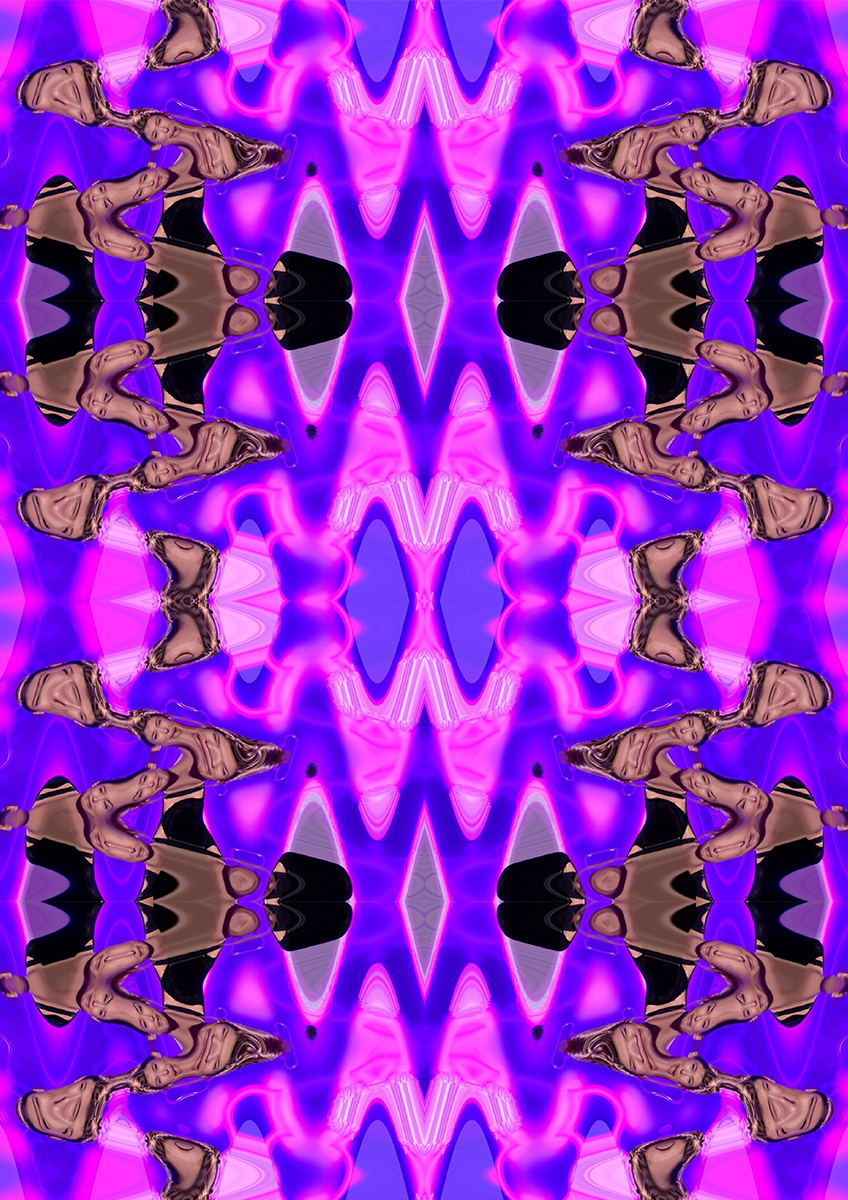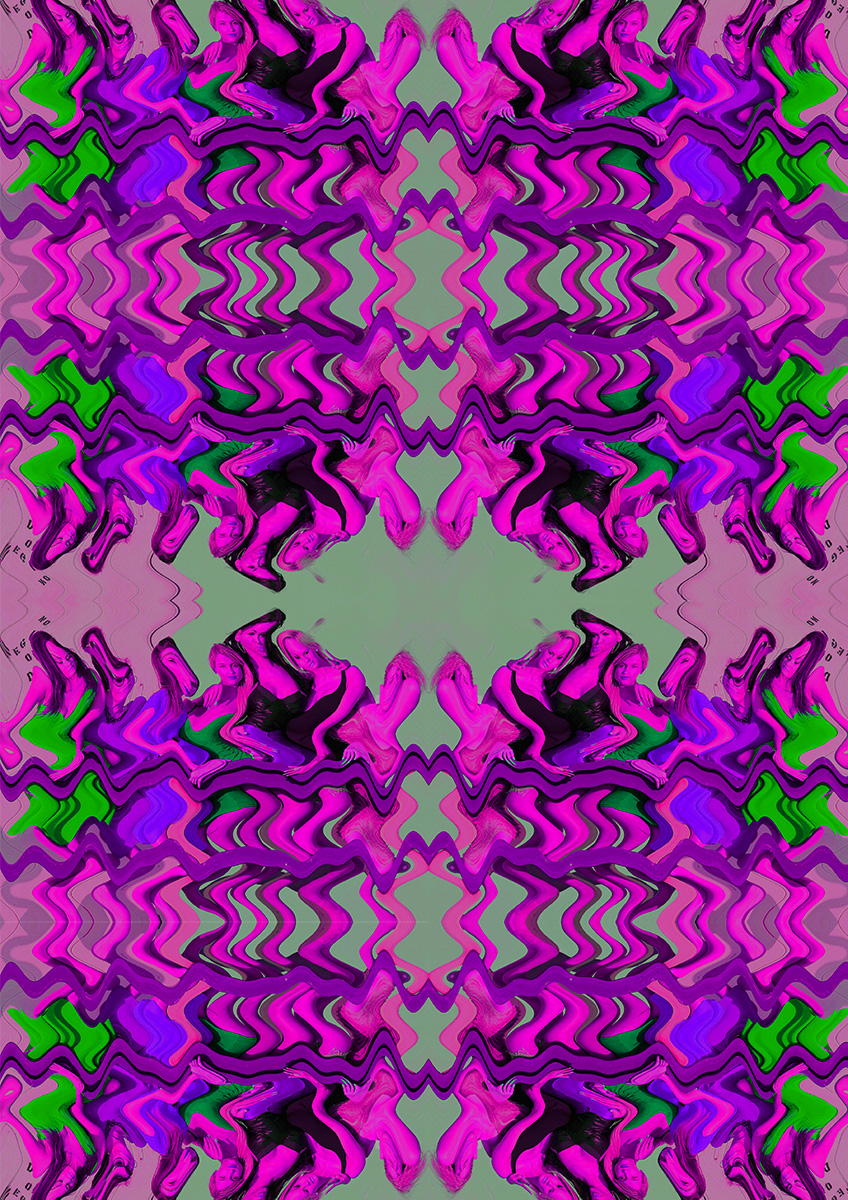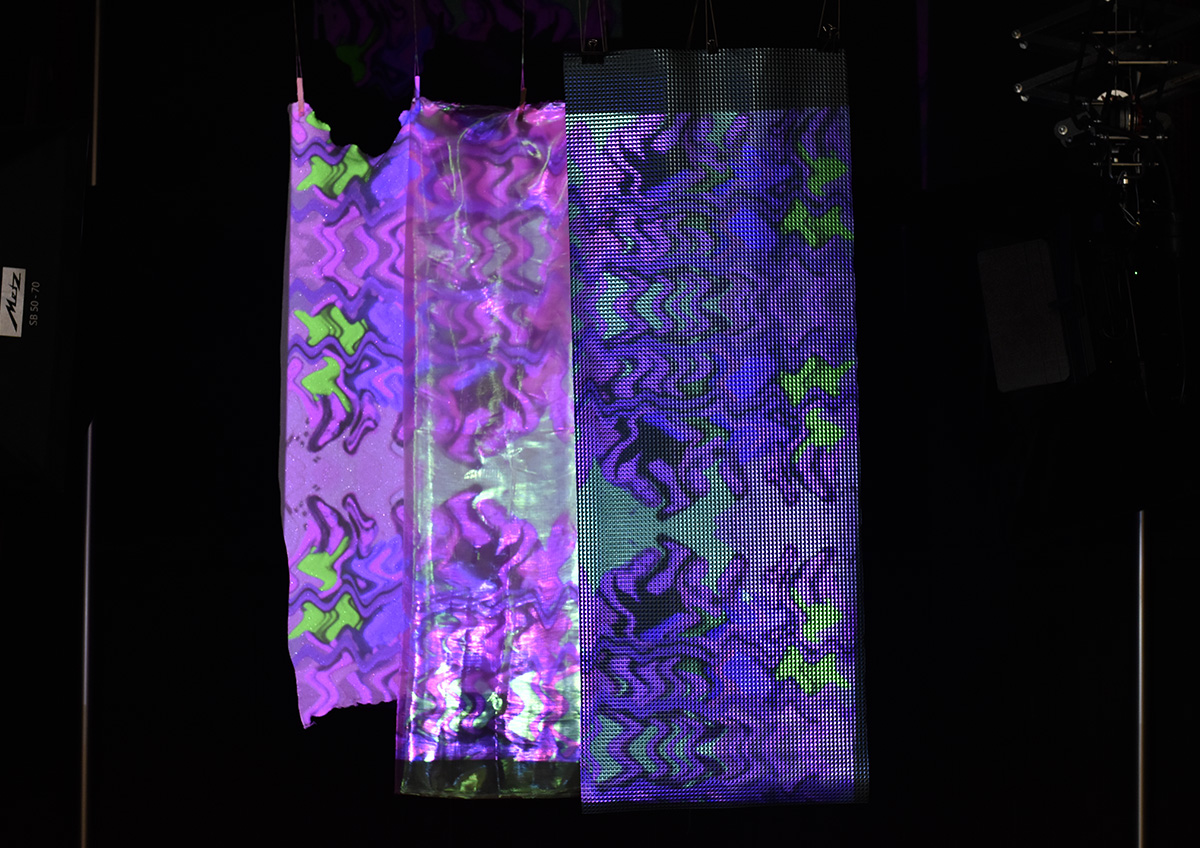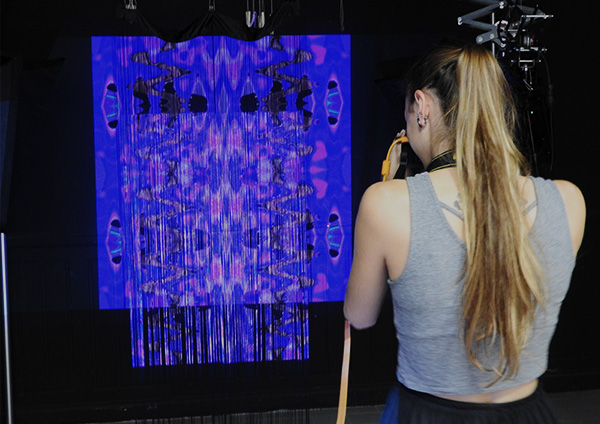TV SHOW
Textile design - Scenography - 2018

“Don’t cry Nabilla”
TV SHOW is a range of patterns and surfaces dealing with the camouflage notion. It’s staged in a space.
This project proposes a graphic, tactile and coloured universe which questions the relationship of humans to their environment, but also their relationship to the screen.
Each human is unique, special, but they also evolve within a community. They’re influenced by the world around them.
In the 21st century, new forms of broadcasting have appeared in the media. There are therefore more and more opportunities to differentiate oneself and to stand out from the crowd. ’The “average person” can become “famous’ (Warhol’s 15 minutes of fame) for doing nothing remarkable.
Reality TV is one of these media and promotes self-exposure, exaggerated individualism and acceptable transgressions.
But isn’t showing it all a way of covering up the truth?
In the age of exhibition, reality TV arouses curiosity, but always in a relationship of distance and proximity. Many people try to hide their attraction to this ‘media of shame’, ‘sub-media’, which seems frivolous and raises ethical questions, such as voyeurism. Reality TV contestants are ultimately like ‘lab rats’ who are given assignments. The viewer observes their reactions, their ways of evolving within a community, and their ability to break the rules to create a scandal or amusement.
What is the balance between the visible and the invisible, how far do these personalities go in transgression to stand out from the crowd?
The range of patterns has been created through digital tools that allow the manipulation of the image.
The digital tool affects both the means of production and the drawing tools. Yesterday, as today, technology is to be considered as much as a constraint to live with as a lever for creation and innovation.
An interplay of scales makes it possible to bring several visions to these patterns. The viewer is encouraged to look closely and from a distance and perhaps to see the other side of the set, the hidden side. These patterns refer to the artifice that emerges from reality TV.
This range was contextualised by a staging in the space. The aim was to identify the pattern in a physical and behavioural context in order to raise questions in the viewer.
The pattern was video-projected onto different textile surfaces, becoming screens.
The screen is a mysterious medium. It embodies the encounter between virtual matter and the tangible world. Swept up by its content, we forget its materiality. Its malfunctions reveal it as matter and colour.
This installation encourages us to question the image – screen. Through techniques that involve the accumulation and immersion of physical characters, the aim has been to try to give life to these surfaces.
This project proposes a graphic, tactile and coloured universe which questions the relationship of humans to their environment, but also their relationship to the screen.
Each human is unique, special, but they also evolve within a community. They’re influenced by the world around them.
In the 21st century, new forms of broadcasting have appeared in the media. There are therefore more and more opportunities to differentiate oneself and to stand out from the crowd. ’The “average person” can become “famous’ (Warhol’s 15 minutes of fame) for doing nothing remarkable.
Reality TV is one of these media and promotes self-exposure, exaggerated individualism and acceptable transgressions.
But isn’t showing it all a way of covering up the truth?
In the age of exhibition, reality TV arouses curiosity, but always in a relationship of distance and proximity. Many people try to hide their attraction to this ‘media of shame’, ‘sub-media’, which seems frivolous and raises ethical questions, such as voyeurism. Reality TV contestants are ultimately like ‘lab rats’ who are given assignments. The viewer observes their reactions, their ways of evolving within a community, and their ability to break the rules to create a scandal or amusement.
What is the balance between the visible and the invisible, how far do these personalities go in transgression to stand out from the crowd?
The range of patterns has been created through digital tools that allow the manipulation of the image.
The digital tool affects both the means of production and the drawing tools. Yesterday, as today, technology is to be considered as much as a constraint to live with as a lever for creation and innovation.
An interplay of scales makes it possible to bring several visions to these patterns. The viewer is encouraged to look closely and from a distance and perhaps to see the other side of the set, the hidden side. These patterns refer to the artifice that emerges from reality TV.
This range was contextualised by a staging in the space. The aim was to identify the pattern in a physical and behavioural context in order to raise questions in the viewer.
The pattern was video-projected onto different textile surfaces, becoming screens.
The screen is a mysterious medium. It embodies the encounter between virtual matter and the tangible world. Swept up by its content, we forget its materiality. Its malfunctions reveal it as matter and colour.
This installation encourages us to question the image – screen. Through techniques that involve the accumulation and immersion of physical characters, the aim has been to try to give life to these surfaces.







